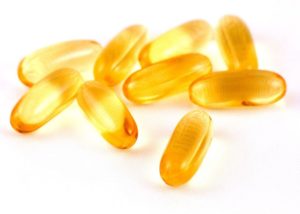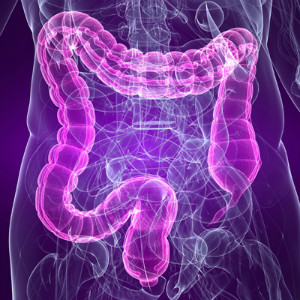 This study found impressive results - improvement in autistic behaviors in children diagnosed with autism spectrum disorder (ASD) with four months of daily vitamin D supplementation. Children in the placebo group did not show improvement. A nice aspect of the study was that the children were randomly assigned to a placebo or a vitamin D group (so that the groups were not self-selected) and it was double-blinded (so no one knew who was getting the vitamins - again to prevent bias). This was a preliminary study - meaning more studies are needed, but it would be amazing if these results hold up... From Science Daily:
This study found impressive results - improvement in autistic behaviors in children diagnosed with autism spectrum disorder (ASD) with four months of daily vitamin D supplementation. Children in the placebo group did not show improvement. A nice aspect of the study was that the children were randomly assigned to a placebo or a vitamin D group (so that the groups were not self-selected) and it was double-blinded (so no one knew who was getting the vitamins - again to prevent bias). This was a preliminary study - meaning more studies are needed, but it would be amazing if these results hold up... From Science Daily:
Vitamin D supplements may benefit children with autism spectrum disorder
Studies have shown an association between the risk of autism spectrum disorder and vitamin D insufficiency. In this latest study, 109 children with autism spectrum disorder were randomized to receive four months of vitamin D3 supplementation or a placebo."Autism symptoms -- such as hyperactivity, social withdrawal, and others -- improved significantly following vitamin D3 supplementation but not after receiving placebo," said Dr. Khaled Saad, lead author of the Journal of Child Psychology and Psychiatry study.
Excerpts from the original study from The Journal of Child Psychology and Psychiatry: Randomized controlled trial of vitamin D supplementation in children with autism spectrum disorder
Autism spectrum disorder (ASD) is a frequent developmental disorder characterized by pervasive deficits in social interaction, impairment in verbal and nonverbal communication, and stereotyped patterns of interests and activities. It has been previously reported that there is vitamin D deficiency in autistic children; however, there is a lack of randomized controlled trials of vitamin D supplementation in ASD children.
Recently, Wang et al. (2016) performed a systematic review and meta-analysis of all studies on serum concentration of 25 (OH)D in ASD (Wang et al., 2016). Eleven studies were included, accounting for a total of 870 ASD patients and 782 healthy controls. Serum levels of 25 (OH)D in participants with ASD were significantly lower than those in controls. They concluded that low vitamin D might serve as a risk factor for autism spectrum disorder (Wang et al., 2016).
In a recent survey, our research group measured 25 (OH)D in 122 ASD children (3–9 years old) and 100 healthy children as controls (Saad, Abdel-Rahman, et al., 2015). The ASD group showed a significantly lower level of serum 25 (OH)D compared with the control group (p < .0001). The study found highly significant inverse correlations between serum 25 (OH)D levels and autism rating scales. In the second part of the previous study (Saad, AbdelRahman, et al., 2015), an open-label trial of 83 subjects who completed a 3-month therapy with high daily doses of vitamin D (300 IU/kg/day) was performed. Collectively, 80.7% of the children with ASD had significantly improved outcome, which was mainly in the sections of the CARS and ABC subscales that measure behavior, stereotypy, eye contact, and attention span (Saad, Abdel-Rahman, et al., 2015).

 Guidelines for how to prevent food allergies in children are changing. Until very recently, it was avoid, avoid, avoid exposing babies or young children to any potential allergens. Remember parents being advised that if an allergy to X (whether pets or food) runs in the family, then absolutely avoid exposing the child to the potential allergen? Well, recent research (
Guidelines for how to prevent food allergies in children are changing. Until very recently, it was avoid, avoid, avoid exposing babies or young children to any potential allergens. Remember parents being advised that if an allergy to X (whether pets or food) runs in the family, then absolutely avoid exposing the child to the potential allergen? Well, recent research ( An article points out what we should all be concerned with, but is being ignored - pesticide residues of glyphosate (found in Monsanto's Roundup) and 2,4-D in foods. Glyphosate is the most used pesticide in the world, and both glyphosate and 2,4-D pesticide residues in food are set to really increase with the introduction of
An article points out what we should all be concerned with, but is being ignored - pesticide residues of glyphosate (found in Monsanto's Roundup) and 2,4-D in foods. Glyphosate is the most used pesticide in the world, and both glyphosate and 2,4-D pesticide residues in food are set to really increase with the introduction of  An
An  Eating lots of fruits and vegetables (more than 10 servings a day!) is linked to better cognitive functioning in both normal weight and overweight adults (both young and older adults), and may delay the onset of cognitive decline that occurs with aging and also dementia.
Eating lots of fruits and vegetables (more than 10 servings a day!) is linked to better cognitive functioning in both normal weight and overweight adults (both young and older adults), and may delay the onset of cognitive decline that occurs with aging and also dementia. 
 Lead exposure is a big problem for children throughout the United States and the rest of the world - whether lead from plumbing, lead paint, lead solder, and even from nearby mining. There are no safe levels of lead in children (best is zero) because it is a neurotoxicant - thus it can permanently lower IQ scores as well as other neurological effects. More lead gets absorbed if the person also has an iron deficiency than if the person has normal iron levels.
Lead exposure is a big problem for children throughout the United States and the rest of the world - whether lead from plumbing, lead paint, lead solder, and even from nearby mining. There are no safe levels of lead in children (best is zero) because it is a neurotoxicant - thus it can permanently lower IQ scores as well as other neurological effects. More lead gets absorbed if the person also has an iron deficiency than if the person has normal iron levels.